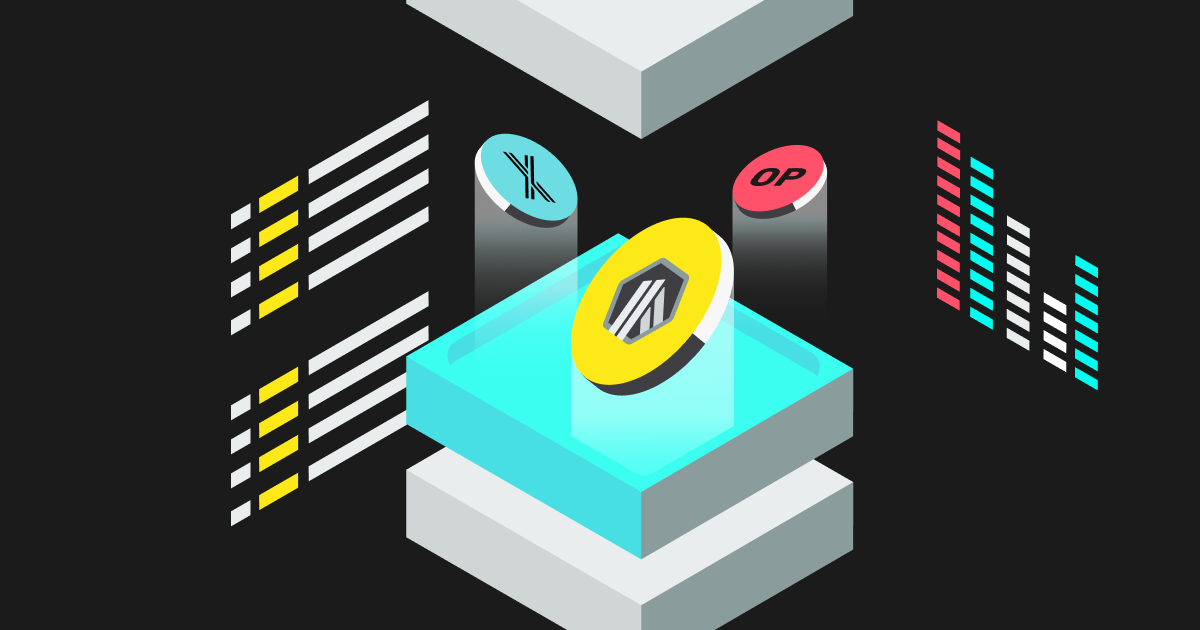
What Is Blockchain Layer 2?
TL;DR
- Layer 2 is a technical solution to improve the scalability of blockchain. It reduces the burden on the mainnet and improves transaction processing speed and scalability.
- Layer 2 offers higher throughput, lower transaction fees, better scalability, and better privacy protection.
- Depending on the technical solution, Layer 2 can be divided into state channels, plasma, sidechains, and rollups.
- Well-known Layer 2 projects such as Arbitrum, Optimism have provided a better experience for users and accelerated the mass adoption of blockchain technology.
As the Ethereum ecosystem continues to grow, network congestion and high transaction fees have stood in the way of further development. Layer 2 technology was created to address on-chain congestion and scalability issues. Layer2 has been a huge success in just a few years, experiencing a significant leap since 2022 with the rise of Optimism and Arbitrum. On-chain data shows that the average daily trading volume on the Layer 2 network has surpassed that of the Ethereum mainnet. According to data from L2BEAT, TVL on the current Layer 2 network grew to US$8.24 billion, up nearly 170x from the beginning of 2021.
Layer 2 is not only an essential part of the Ethereum ecosystem, but it has also become one of the important directions for the scaling of blockchain. So what exactly is Layer 2?
What is Layer 2?
Layer 2 is a technical solution to improve the scalability of blockchain. Usually, a new network protocol layer is built on top of the blockchain protocol to reduce the burden on the main chain by processing transactions on the second layer, and to improve the speed and scalability of transactions, thus increasing the efficiency of the entire system.
Simply put, if you compare blockchain networks such as Ethereum to highways, Layer 2 is the viaduct that is built over those highways. It can effectively increase the throughput of the mainnet, reduce the risk of congestion on layer 1 networks such as Ethereum, and lower on-chain transaction fees.
What are the advantages of Layer 2?
Faster transaction confirmation time: Faster transaction times are achievable because transactions are placed on the Layer 2 network for processing, and do not need to wait for confirmation from the mainnet.
Higher throughput: By shifting transaction processing from the mainnet to the Layer 2 network, the throughput of the entire system can be greatly increased, thus supporting more transactions.
Lower transaction fees: Since transactions occur on the second layer, there is no need to pay the high fees on the mainnet, so lower transaction fees can be achieved.
Better scalability: By using Layer 2 technology, transaction processing can be shifted from the mainnet to the second layer, thus reducing the mainnet's burden and improving the entire system's scalability.
Better privacy protection: Some Layer 2 technologies can improve user privacy protection through the use of state channels or privacy sidechains.
Types of Layer 2 scaling solutions
Depending on different underlying technologies, Layer 2 can be divided into state channels, plasma, sidechains, and rollups.
State Channel: High throughput and low transaction fees by establishing an off-chain state channel between two parties.
Plasma: The blockchain network is divided into multiple subchains, each of which can operate independently, thereby increasing the throughput of the entire network.
Sidechain: By connecting one blockchain to another, it enables assets to be transferred between the two chains, thus extending the functionality of the original blockchain.
Rollups: A large number of transactions are bundled into a collection and submitted together to the main chain, thus reducing the number of transactions on the mainnet and improving transaction efficiency.
After years of development, rollups have become the most popular Layer 2 solution today. There are two main types: optimistic rollups, and ZK-rollups. See more: Zk-rollup vs. Optimistic Rollup: Explained
Optimistic rollup is a scaling solution based on optimistic assumptions which computes a large number of transactions off-chain, and then bundles them into a single batch transaction that is passed back to the Ethereum mainnet. One example of using optimistic rollup is Arbitrum, a project that has received much public attention.
ZK-rollup, on the other hand, uses zero-knowledge proof technology to verify the validity of transactions off-chain and submit the verification results in a simplified form to the Ethereum mainnet. Vitalik, the founder of Ethereum, once said that although the optimistic rollup is currently more mature, it will be replaced by ZK-rollup in the long run.
The most noteworthy projects in the Layer 2 sector
Arbitrum (ARB)
Arbitrum is one of the most talked about Layer 2 projects today. It adopts optimistic rollup to compute a large number of transactions off-chain and then bundle them into a single batch transaction that is passed back to the Ethereum mainnet. Compared to other rollup solutions, Arbitrum offers higher transaction throughput and lower transaction costs, while maintaining the same security and decentralization features as the Ethereum mainnet. Currently, the on-chain TVL of Arbitrum is over US$5 billion, and its token ARB has a circulating market cap of over US$1.4 billion.
Trade ARB now on Bitget
Optimism (OP)
Optimism also uses optimistic rollup technology. It is the first optimistic rollup solution compatible with Ethereum Virtual Machines (EVMs). This means existing applications in the Ethereum ecosystem can run on both Ethereum and Optimism at a fraction of the cost. Currently, the TVL of the Optimism ecosystem has now surpassed US$1 billion, making it the second largest project in the Layer 2 sector. The circulating market cap of its OP token has reached approximately US$880 million.
Trade OP now on Bitget
Immutable X (IMX)
Immutable X is a Layer 2 scaling solution based on the Ethereum network. It can process more than 9000 transactions per second and have them confirmed in a fraction of the time without the need for users to pay gas fees. It solves the problem of long confirmation time and high gas fees when trading NFT on the Ethereum network. In addition, Immutable X has several unique design features, such as the Volition model, metadata trading, and carbon-neutral NFT trading. Currently, the TVL of the Immutable X ecosystem is about US$100 million, and the circulating market cap of the IMX token is about US$660 million.
Trade IMX now on Bitget
zkSync
Compared with the optimistic rollup solution used by Arbitrum and Optimism, ZK-rollup has been favored by the capital market for its higher efficiency and security. As the ZK-rollup solution leader, zkSync is considered one of the most promising projects in the Layer 2 space. Currently, both zkSync Lite and zkSync Era are live, with the TVL of its ecosystem reaching approximately US$80 million. Despite the fact that zkSync's token issuance plan remains unknown, the market has high expectations for its future. See more: ZkSync Era Mainnet Release - The Self-Proclaimed End-Game for Ethereum Scaling
StarkNet
StarkNet is a Layer 2 network based on ZK-rollup technology. Any dApp can achieve the unlimited scale of its computation on this network. In addition, it allows smart contracts to interact with other contracts deployed on the blockchain, thus increasing the integration between protocols. Since the launch of its mainnet, the Starknet network has been integrated with several DeFi projects. The token issuance plan of the project has not yet been announced to the public.
Closing thoughts
As more Layer 2 solutions emerge, the main battleground of the crypto industry is shifting from Layer 1 to Layer 2. By offering higher transaction speeds and lower transaction fees, Layer 2 delivers a better experience to its users. Therefore, it is considered to be a driving factor for the next bull market.
Disclaimer: The opinions expressed in this article are for informational purposes only. This article does not constitute an endorsement of any of the products and services discussed or investment, financial, or trading advice. Qualified professionals should be consulted prior to making financial decisions.


